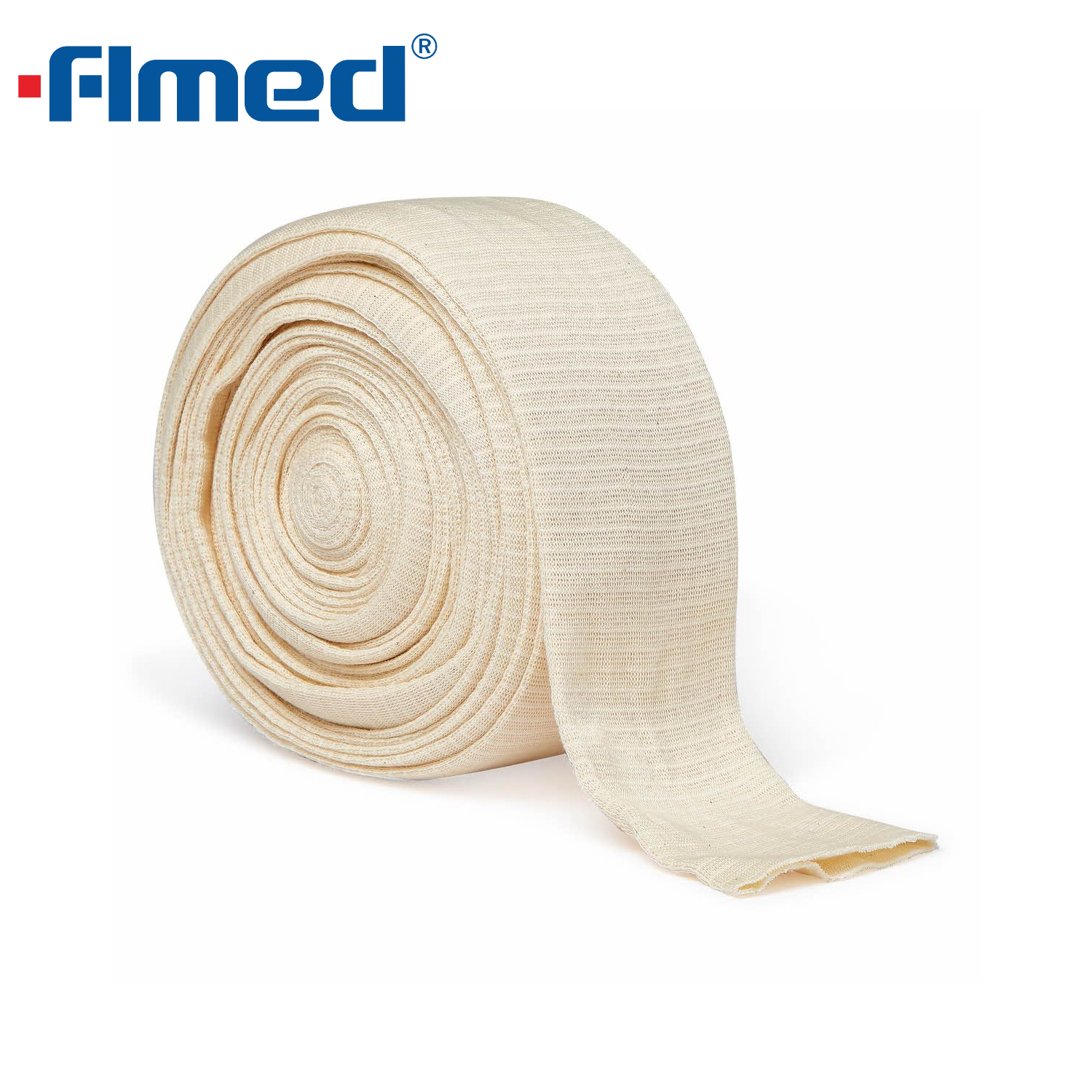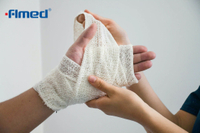
Medical Gauze is one of the most essential supplies in any first aid kit, clinical setting, or surgical environment. The simple mesh-like fabric, often made from cotton, seems unassuming, but plays a pivotal role in wound care. When people ask, “Is it OK to put gauze on an open wound?”, the answer is a resounding yes—but with some crucial conditions and considerations.
This article dives deep into the proper usage of medical gauze, explains its different types, compares it with alternatives, analyzes clinical data, and answers frequently asked questions about its application in wound care. Whether you're a healthcare professional, caregiver, or someone looking to learn more about proper wound management, this comprehensive guide will provide the insight you need.
Understanding Medical Gauze: A Critical Tool in Wound Management
Medical gauze is a thin, breathable fabric used to dress wounds, absorb exudate, provide protection, and assist healing. It is typically manufactured from 100% cotton, but there are also synthetic or blended types for specialized uses. Available in sterile and non-sterile forms, it comes in various formats such as rolls, pads, and sponges.
Key Features of Medical Gauze
| Feature | Description |
| Absorbency | High absorbency helps wick away fluids and keep wounds dry. |
| Breathability | Allows air to circulate, promoting faster healing. |
| Sterility | Sterile gauze minimizes the risk of introducing infection. |
| Variety of Forms | Rolls, pads, swabs, and sponges for versatile usage. |
| Conformability | Easily molds to different wound sizes and body contours. |
| Availability | Readily accessible in pharmacies, hospitals, and first aid kits. |
These characteristics make medical gauze indispensable in wound care, particularly for open wounds.
![tubular-support-bandage-msc9502lf tubular-support-bandage-msc9502lf]()
Is It OK to Put Gauze on an Open Wound?
Yes—medical gauze is one of the safest and most recommended materials to use on an open wound, provided it is used correctly.
Why Medical Gauze Works for Open Wounds
Protection: It creates a physical barrier that protects the wound from external contaminants, dust, bacteria, and injury.
Absorption: It absorbs blood and wound exudate, helping to keep the area dry and reducing the risk of infection.
Wound Healing: It supports a moist healing environment when used with the right secondary dressings.
Reduced Scarring: Prevents the wound from scabbing too thickly, potentially reducing long-term scarring.
Best Practices for Using Gauze on Open Wounds
Always clean the wound with sterile saline or antiseptic before application.
Choose sterile gauze to avoid contamination.
Secure the gauze using medical tape or a cohesive bandage wrap.
Change gauze regularly, at least once daily or whenever it becomes wet or soiled.
Monitor for signs of infection (redness, swelling, pus, or increasing pain).
Medical gauze must be used as part of a larger wound care protocol, which includes cleaning, monitoring, and sometimes, the use of additional wound care products such as antimicrobial dressings or wound ointments.
Types of Medical Gauze for Open Wounds
There are various types of medical gauze, each designed for specific wound needs. Understanding their differences can ensure optimal healing.
| Type of Gauze | Best For | Key Feature |
| Sterile Gauze Pads | Surgical incisions, deep wounds | Single-use, bacteria-free surface |
| Non-Sterile Gauze Rolls | Minor scrapes or external bandaging | Cost-effective, bulk use |
| Non-Adherent Gauze | Open wounds with fragile tissue | Doesn't stick to the wound surface |
| Impregnated Gauze | Burn wounds, infected wounds | Infused with ointments/antiseptics |
| Hydrophilic Gauze | High-exudate wounds | Maximum absorbency |
| Gauze Sponges | Cleaning, applying antiseptics | Convenient pre-cut pads |
Data-Backed Benefits of Medical Gauze
Numerous clinical studies support the efficacy of medical gauze in wound healing. In a comparative analysis published in the Journal of Wound Care, it was noted that:
Open wounds dressed with sterile gauze had a 40% lower infection rate than wounds left uncovered.
Non-adherent gauze resulted in 30% less wound trauma during dressing changes compared to traditional cotton gauze.
Gauze combined with topical antimicrobials improved healing time in chronic wounds by up to 20%.
Clinical Comparison Table: Gauze vs. Other Wound Dressings
| Dressing Type | Infection Control | Absorbency | Cost-Effective | Ease of Use | Wound Types Best Suited |
| Medical Gauze | ★★★☆☆ | ★★★★☆ | ★★★★★ | ★★★★★ | All general wounds |
| Hydrocolloid Dressings | ★★★★☆ | ★★★☆☆ | ★★☆☆☆ | ★★☆☆☆ | Bedsores, ulcers |
| Foam Dressings | ★★★★☆ | ★★★★★ | ★★☆☆☆ | ★★★☆☆ | Heavy exudate wounds |
| Alginate Dressings | ★★★★★ | ★★★★★ | ★★☆☆☆ | ★★★★☆ | Bleeding wounds |
| Transparent Film | ★★★☆☆ | ★☆☆☆☆ | ★★★☆☆ | ★★★★☆ | Superficial wounds |
This data highlights the versatility and effectiveness of medical gauze across various wound types, making it a first-line choice for general use.
The Role of Medical Gauze in Modern Wound Care Trends
As wound care practices evolve, medical gauze continues to adapt. Here are some key innovations and emerging trends:
1. Antimicrobial Gauze
Antimicrobial medical gauze, impregnated with agents like silver, iodine, or honey, offers extended protection against bacteria, especially for chronic or infected wounds.
2. Moist Wound Healing
Combining medical gauze with hydrogel or saline dressings helps maintain a moist wound environment—a proven strategy for faster healing.
3. Telemedicine Integration
With more wound assessments occurring via telehealth, the use of easy-to-apply, cost-effective medical gauze makes home care more manageable for non-professionals under remote guidance.
4. Biodegradable Gauze
Environmentally friendly gauze products are now available for eco-conscious consumers and facilities focused on reducing medical waste.
Common Mistakes to Avoid When Using Medical Gauze
Using non-sterile gauze on fresh wounds: This can introduce pathogens and lead to infection.
Failing to change the gauze regularly: Trapped moisture or dirt can worsen the wound.
Using adhesive directly on the wound: Always secure gauze around, not on, the injury.
Letting gauze dry and stick: This can cause trauma during removal. Use non-adherent gauze for open wounds.
Skipping wound cleaning before application: Debris left in wounds can lead to complications.
When Not to Use Medical Gauze
While medical gauze is broadly effective, there are cases where it may not be ideal:
Highly exudative wounds: Use foam or alginate dressings instead.
Burns or ulcers needing advanced care: Hydrogel dressings may provide better pain relief and moisture retention.
Sensitive skin allergies: Always verify gauze material to prevent irritation.
Best Practices for Buying Medical Gauze
When choosing the right medical gauze for wound care, consider the following factors:
Buying Consideration Table
| Consideration | Recommendation |
| Sterility | Always choose sterile gauze for open or surgical wounds |
| Absorbency Level | Choose high-absorbency gauze for heavy exudate wounds |
| Material Composition | Cotton is preferred for hypoallergenic properties |
| Form Factor | Rolls for wrapping, pads for localized injuries |
| Brand Reputation | Look for FDA-approved or CE-certified products |
FAQs
Can you put gauze directly on an open wound?
Yes, medical gauze can be placed directly on an open wound, especially if it’s sterile and non-adherent. It helps protect the wound and aids in healing.
How often should I change gauze on a wound?
Change the gauze at least once per day or sooner if it becomes soaked, dirty, or loose.
Is medical gauze better than band-aids?
Medical gauze is more versatile and suitable for larger or deeper wounds, whereas band-aids are better for small, superficial cuts.
What is the best gauze for infected wounds?
Use antimicrobial gauze or impregnated gauze with silver or iodine for infected wounds.
Can gauze cause infection?
If reused, applied uncleanly, or left unchanged too long, medical gauze can lead to infection. Always use fresh, sterile gauze.
How do I keep gauze from sticking to a wound?
Use non-adherent gauze or apply a thin layer of ointment on the wound before covering.
Conclusion
Putting medical gauze on an open wound is not only okay—it’s often the best first step toward proper wound care. With its absorbent, protective, and breathable properties, medical gauze plays a central role in managing everything from minor scrapes to post-surgical wounds. When chosen and applied correctly, it ensures faster healing, reduces the risk of infection, and provides peace of mind in everyday and clinical settings alike.
As wound care continues to evolve with innovations in antimicrobial and eco-friendly options, medical gauze remains a reliable, versatile solution that meets both traditional and modern healing needs. Whether you’re caring for a loved one at home or managing patients in a healthcare facility, medical gauze is an indispensable tool in your wound care arsenal.

 English
English











